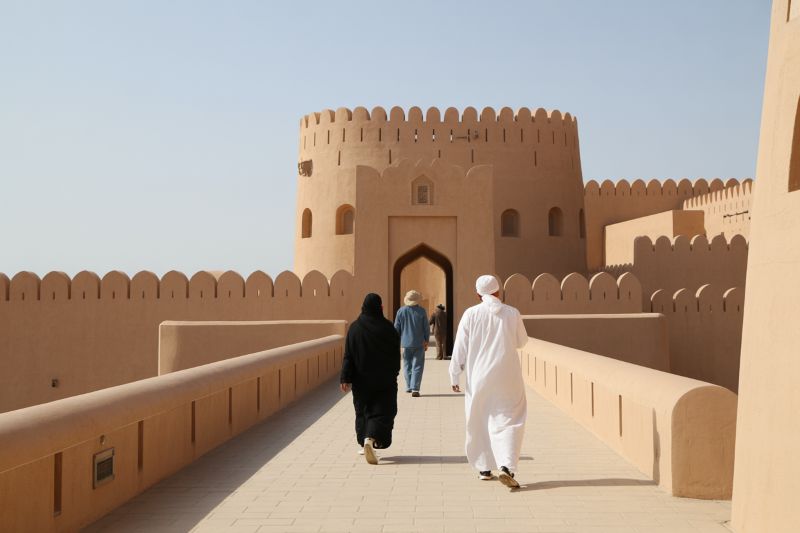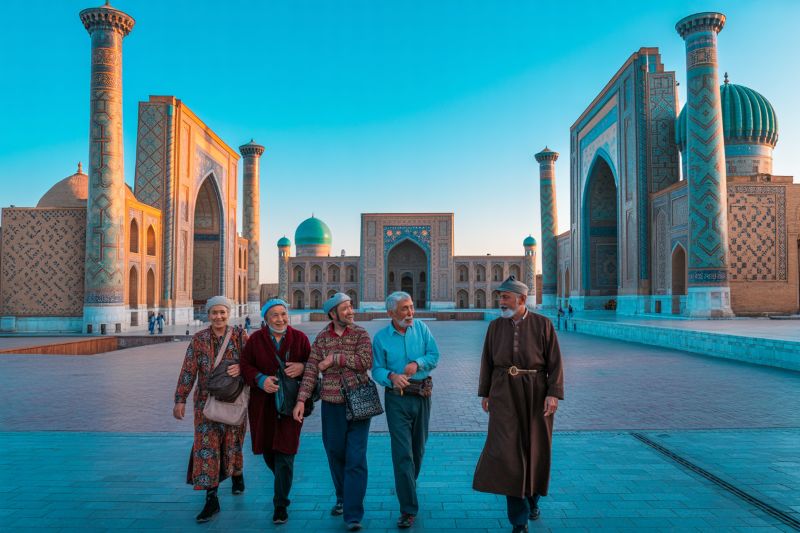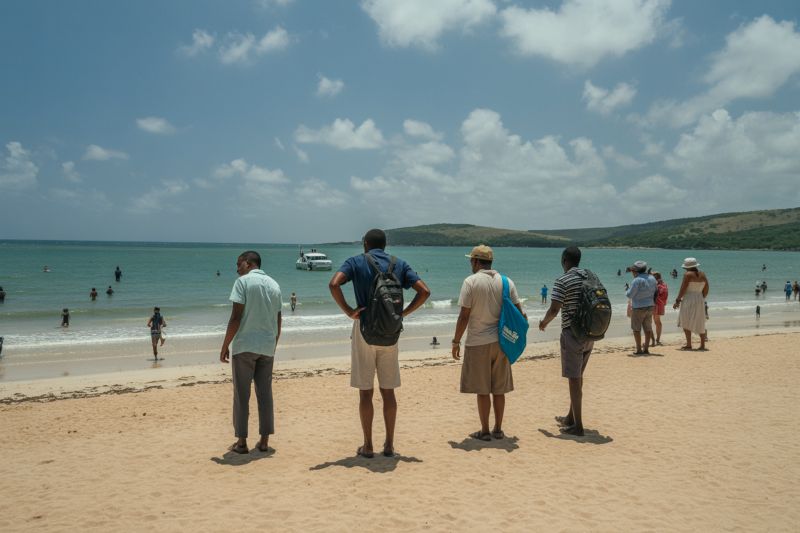South Africa’s Hospitality Sector Set for Growth with Boutique and Serviced Apartments Leading the Way, Get the Details Here

South Africa’s hospitality sector continues to grow and recover its value to become one of the active participants on the world tourism stage. The segment of the market South African hospitality is expected to grow from $11.49 billion in 2025 to 15.64 billion in 2030 with an annual growth of 6.37%. This growth is due to the increase in service of boutique hotels and the rise of serviced apartments which meet the growing demand of hospitality consumers.
Boutique and Serviced Apartments Leading the Charge
One of the most notable trends in South Africa’s hospitality market is the growing demand for boutique hotels and serviced apartments. In 2024, the boutique hotel market alone generated $278.1 million and is forecast to grow to $442.1 million by 2030, with an impressive CAGR of 8.1%. These accommodations are becoming increasingly popular due to their focus on personalized guest experiences, locally inspired designs, and an authentic sense of place.
As international travel rebounds and domestic tourism strengthens, this trend has gained significant traction. Travelers are moving away from generic hotel stays in favor of accommodations that offer more immersive experiences, local authenticity, and unique designs. These preferences are driving the success of boutique hotels and serviced apartments, which often reflect the culture and character of their surroundings, making them attractive options for tourists seeking something beyond the conventional.
Sector Growth Drivers: Rising Occupancy and Increased Average Rates
The positive shift in South Africa’s hospitality sector is evident in key performance metrics. In May 2025, national hotel occupancy rates rose to 59.5%, marking a 6.9% increase year-on-year. Additionally, the average daily rate (ADR) climbed 8.5% to ZAR 1,747.04, highlighting the increasing demand for quality accommodations.
The increase in occupancy and ADR is indicative of the broader recovery and growth of the South African hospitality market. As international travelers return and domestic tourism continues to thrive, the demand for unique, high-quality accommodations is expected to remain strong. These trends provide a promising outlook for the country’s hospitality sector, creating opportunities for both established and new players in the market.
Entrepreneurs Driving Innovation in South Africa’s Hospitality Landscape
South Africa’s hospitality sector is also being reshaped by dynamic entrepreneurs who are responding to shifting market demands and creating innovative offerings. Two notable entrepreneurs exemplify how the market is evolving:
- Wendy Thembeka Dlomo – Founder of The Living Collective, based in the KwaZulu-Natal Midlands, Wendy has created a brand that spans countryside homes and a flagship coastal property in Ballito. Her vision is to offer spaces that reflect the warmth and elegance of African design while providing modern luxury. “I wanted to create spaces where guests could feel the warmth and elegance of African design while enjoying modern luxury,” she says.
- Eva Biyela – CEO of Big Sky Travel and Tours, a 100% Black woman-owned company that has grown from a small agency in White River to a multi-branch operation across South Africa and into Eswatini. Eva’s business focuses on high-end leisure and corporate bookings, ensuring that every trip is seamless and memorable. “Our goal is to make every trip seamless and memorable,” she explains.
Both entrepreneurs are finalists in the Business Partner Limited Entrepreneur of the Year® Award, demonstrating how innovation, entrepreneurial spirit, and local partnerships are driving positive changes in the South African hospitality landscape. Their work highlights the rising importance of personalized experiences, locally inspired designs, and luxury services in catering to the evolving needs of modern travelers.
Shifting Preferences: What It Means for Travelers and Industry Players
The changing landscape of South Africa’s hospitality industry reflects a broader shift in traveler preferences. Today, guests are not just looking for a place to stay; they are seeking unique experiences that offer a deep connection to the destination. This evolution in accommodation preferences has led to the rise of service apartment models, boutique hotels with locally crafted interiors, and tailored guest services.
For example, service apartments are becoming increasingly popular due to their flexibility, allowing guests to feel more like locals and providing the comfort and amenities of a home away from home. These apartments often feature locally inspired interiors and modern conveniences such as tech-enabled bookings, making them a preferred choice for discerning travelers. Boutique hotels, on the other hand, are becoming synonymous with design-forward spaces that offer an intimate and authentic experience, blending luxury with local culture.
This shift in demand presents a clear implication for industry players: adapt to the changing needs of travelers or risk being left behind. Accommodations that prioritize authenticity, unique designs, and immersive experiences are better positioned to attract modern travelers who value more than just a place to sleep.
The Luxury Segment: The Fastest-Growing Market in South Africa
Among the different segments of the hospitality market, the luxury boutique hotel sector is the fastest-growing in South Africa. As international tourists seek more upscale, personalized experiences, high-end boutique hotels are responding by offering bespoke services, locally inspired designs, and exclusive experiences. This segment’s rapid growth is a direct reflection of global trends, with travelers increasingly opting for accommodations that go beyond the typical hotel experience.
For industry players, investing in luxury accommodations that combine local culture with high-end amenities is an opportunity to tap into a lucrative and expanding market. Providing tailored services, from personalized concierge offerings to curated cultural experiences, can elevate the guest experience and differentiate a property in a competitive market.
Investment and Sustainability in South Africa’s Hospitality Future
The hospitality industry’s growth in South Africa is not just about expanding the number of rooms or properties; it’s also about creating a sustainable future for the sector. As travelers increasingly prioritize sustainability, operators who invest in eco-friendly practices, sustainable building designs, and responsible tourism initiatives will stand out in the market. Partnerships with local artisans, communities, and businesses can also provide a sustainable edge, ensuring that the economic benefits of tourism are shared by local communities.
For operators, sustainability efforts may include reducing waste, using renewable energy, and sourcing local products for their offerings. By aligning their operations with global sustainability standards, South Africa’s hospitality businesses can appeal to a growing segment of eco-conscious travelers.
South Africa’s Bright Hospitality Future
A sustained boom in South Africa’s hospitality sector seems to be on the horizon owing to the increasing interest in boutique hotels, luxury serviced apartments, and high-end accommodation options. This sector’s growth is influenced by an uptick in entrepreneurial activity, the authentic demand for well-crafted experiences, and the emergence of new types of travelers. With the country’s hospitality market continuing to diversify, South Africa is well-positioned to be one of the central contributors to the global integrated tourism market, providing an array of authentic, integrated offers to international travelers.
The increasing number of both domestic and international travelers will fuel the demand for high-quality, personalized service accommodation options. Players in the market who are proactive, innovative, and invest in sustainable practices will be the ones to capture the increasing opportunities within South Africa’s hospitality sector.
The post South Africa’s Hospitality Sector Set for Growth with Boutique and Serviced Apartments Leading the Way, Get the Details Here appeared first on Travel And Tour World.


